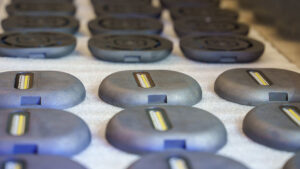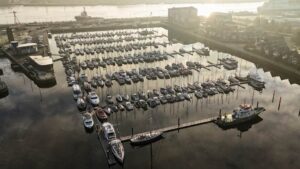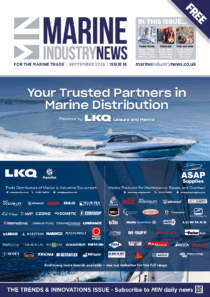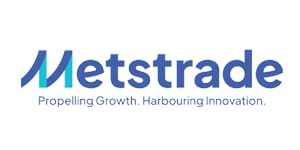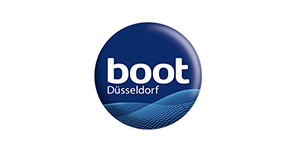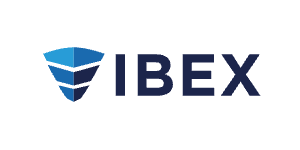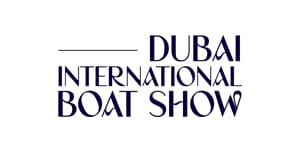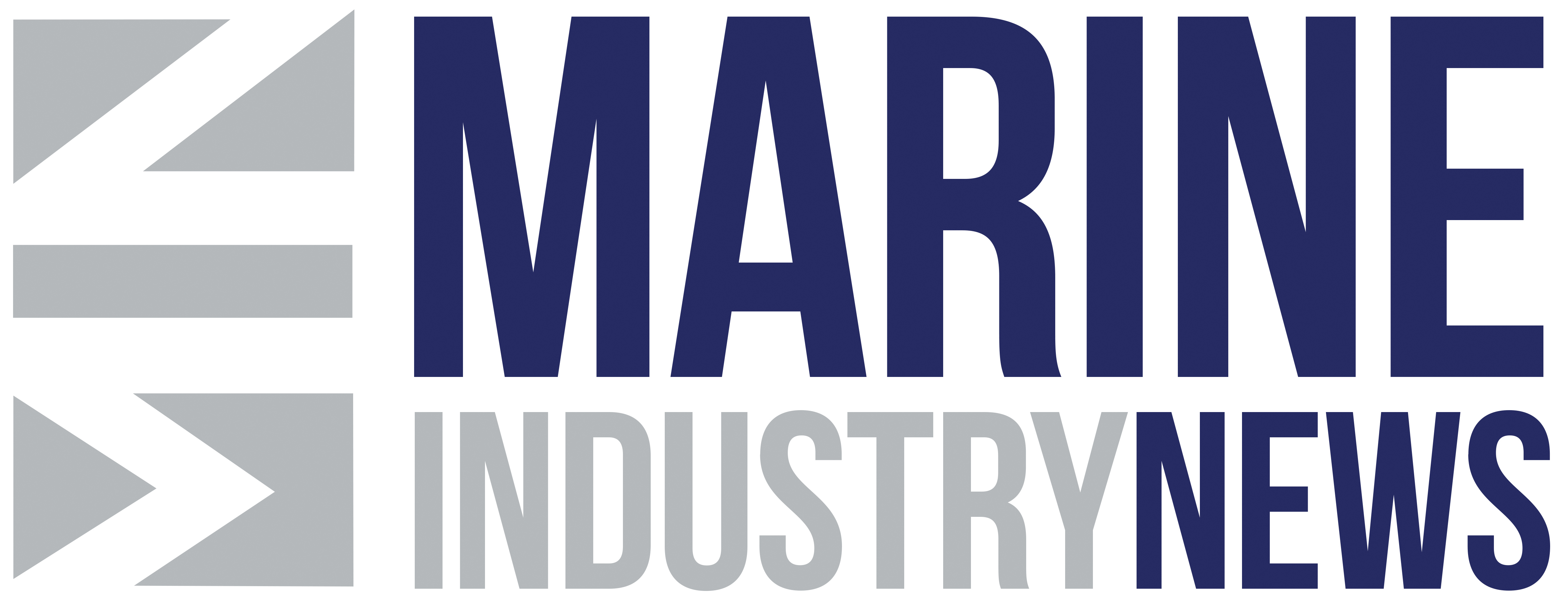Equipment distributor Vetus talks product renewal and influencer marketing
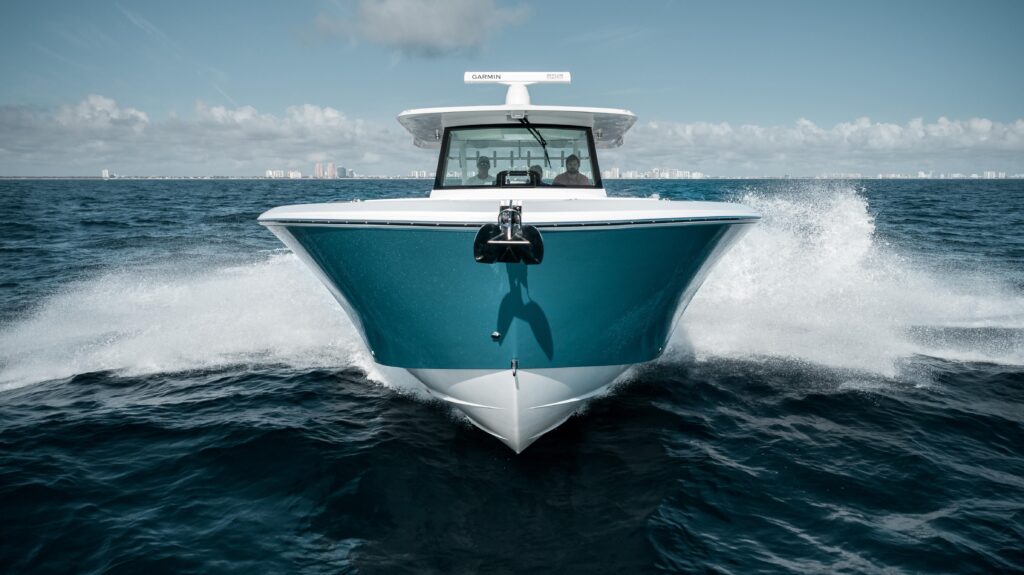
Having celebrated its 60th anniversary last year, Dutch equipment distributor Vetus says it is driving growth through product renewal and taking a more dynamic strategy to marine marketing.
Acquired by Japanese engine maker Yanmar in 2013, Vetus recently moved to an expansive, purpose-built headquarters in the Netherlands where it plans to invest in more in-house innovation. Mostly developed in-house, Vetus produces boat systems including stern gear, fuel, exhaust, wastewater, thruster, steering and anchor systems, and diesel and electric engines.
As marketing director, Sander Gesink, puts it “people like the idea of the convenience of a
one-stop shop like Vetus.”
It’s 60th year saw the company expand partnerships and make its mark at the 37th America’s Cup (AC), where Vetus collaborated with the event’s partner Cupra, and aluminium boatbuilder BravaBoats, to create a sailing version of the Cupra Terramar car. The unique project created the floating CupraTerramar America’s Cup vehicle, used to lead the AC75 yachts towards the racecourse during the Louis Vuitton Cup final match, and as a hotspot for conducting interviews and to host streamers and influencers who were shooting content during the AC.
Influencer marketing in marine
Recently, Vetus has collaborated with social media influencers in the marine space including SV Delos, MJ Sailing, Odd Life Crafting, and Sailing Zatara. Discussing the selection of influencers and the strategy behind its influencer programme, Gesink muses that partnering with like-minded influencers is a valuable way to reach the sailing audience and inform more current and new customers about Vetus solutions.
He explains: “The real-life footage and feedback provides another level of awareness, over and above the other marketing channels. Our current partners are among the most high-profile sailing couples and families. They have sailed thousands of miles, in the most adventurous regions in the world. Who better to prove the reliability, functionality and versatility of the wide range of Vetus systems and products?
“We believe in user generated content, featuring real stories and real installations, not just from famous influencers but also dealers and boat owners. This type of content is about as trustworthy as it gets.”
Electric demand
The evolution of Vetus’s 4,000-product portfolio comes from customer demand. “Today, we hear from our customers that they want boating to be more comfortable and less environmentally damaging. Boaters also want connected, integrated solutions which enable them to maximise time on the water and take the stress out of boating,” he says.
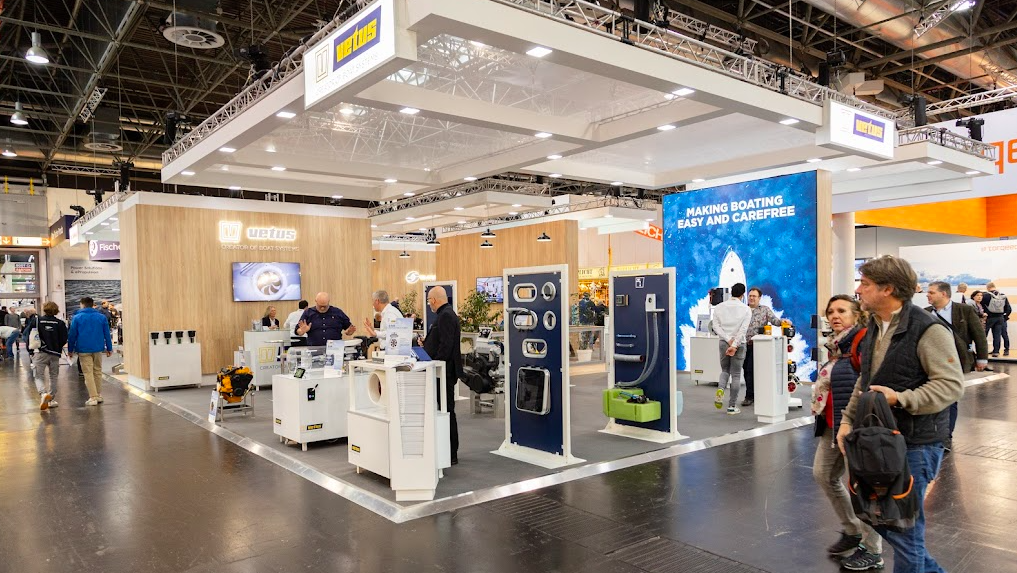
As boaters try to minimise their carbon footprint, electrification has proved an increasing area of interest and growth for the company and its product range. “We answered the demand for compact, complete, easily installed systems. Functioning with the Vetus V-CAN bus system, the E-Line and E-Pod systems
are electric propulsion solutions with ‘active motor braking’, providing optimum control of the boat, with no delay, direct movement, and total control. Both solutions can be used in conjunction with a Vetus Bow Pro proportional bow or stern thruster and can be supplied as a complete system including thrusters and steering components to fully outfit a vessel.
“In 2024, our entire Vetus E-Drive portfolio has undergone significant power management updates, increasing peak input power to 13.3kW (ELINE110), improving performance, and making our propulsion solutions even more reliable. During the America’s Cup we supplied our E-Pod solution to Electric Inside.”
In terms of integration between onboard systems, Vetus has designed its own CAN-bus system, V-CAN, which is intended for Vetus products only. Vetus has also designed a range of products which will communicate between this proprietary V-CAN system and J1939 or NMEA2000. This feature provides the possibility to integrate the Vetus thruster, for example, with some joystick docking systems and/or multi-functional displays on board.
Volatile marine market
Like the wider market, the company is weathering the same market fluctuations and somewhat uncertain geopolitical conditions, but Gesink says a combination of factors has seen Vetus remain relatively insulated to market volatility.
“The acquisition of Vetus by Yanmar in 2013 placed us in a strong position, enabling us to further expand the company quite rapidly. Therefore, although the OEM market, particularly in the smaller boat segment, has seen a decline in recent years, Vetus remains strong and stable. As a global company with a significant focus on the aftermarket, our sales have remained solid despite recent market challenges. The move to the new headquarters building also gives us a strong platform for growth.”
Vetus relocated to a new purpose-built headquarters in Schiedam, Netherlands, in December 2024.
The new facility houses office, commercial and test areas, designed to improve operational efficiency and employee experience. Gesink adds: “The 9500m² state-of-the-art head office [has] commercial and advanced test facilities. Our new warehouse will offer significantly faster processing speeds and increased storage capacity, thanks to advanced automated storage and retrieval systems. These upgrades will streamline our logistics, resulting in quicker and smoother deliveries.”
The office move is part of Vetus’s wider long-term strategy for growth and development, which has seen the increase of its global presence through the opening of new branch offices, as well as multiple regional team expansions, all of which have been driven by an increase in sales. Built next to the neighbourhood of Schiedam, where founder Willem den Ouden was born, the building will double the current warehouse capacity. It will also offer better facilities to showcase products and conduct (in-water) tests with dedicated mooring spaces for demo boats.
Green challenges
It’s no surprise that Vetus flags the industry shift towards more sustainable boating as a key trend moving forward. The new Vetus headquarters features a rooftop solar panel array, generating much of its own energy. For the remaining energy requirement, Vetus says it will use dedicated wind and hydro energy, achieving a carbon neutral footprint.
“This fits with the Yanmar Green Challenge 2050, an ambitious company-wide goal to fundamentally transform its business by eliminating greenhouse gas emissions and harmful substances in all activities, manufacturing, and products by 2050,” explains Gesink.
“Vetus has also announced that the renewable biofuel, hydrotreated vegetable oil (HVO), is approved for its D and M-Line series of marine diesel engines. Decreasing emissions by up to 90 per cent, HVO can be used as a direct replacement for fossil diesels in any certified Vetus engine, either pure or blended in any proportion with diesel,” he adds.
“Vetus technology supports new monitoring capabilities that are set to be a key enabler in the more widespread adoption of electric boats. The Vetus CANNME7 multifunction display, in combination with the digital battery monitoring shunt (CANNS500), provide a much more accurate idea of remaining battery percentage charge and therefore usable range.
“If the skipper pushes the throttle too hard, the range will immediately drop accordingly. It has been very heartening to see, in our testing, how skippers modify their throttle behaviour when in possession of real–time range information,” explains Gesink.
Vetus and industry partnerships
Vetus is known for its bow thruster innovation and is increasingly working with partners to deliver system integration with outboard and inboard engines.
Gesink comments: “Over the last 12 months, we have made considerable progress in developing our OEM partnerships, integrating our Bow Pro thrusters with joystick manoeuvring systems.”
In 2024, Vetus announced a new collaboration with Honda Marine and Ultraflex to introduce a solution connecting outboard engine, steering and the Vetus Bow Pro thruster system with control through a joystick.
“Following our collaboration with Honda Marine and Ultraflex to introduce the new connected solution to improve boat handling, sales are set to begin in spring 2025. Other products will follow but we cannot disclose any details,” adds Gesink.

Key partnerships are also in place with Mercury Marine, for its Mercury Joystick Piloting for outboards, and Yamaha, connecting the Bow Pro thruster range to the Helm Master EX control system. For single and twin inboard engine installations, Vetus works with Yanmar, pairing the Yanmar JC20A Inboard Joystick Control System with the Vetus Bow Pro bow and stern thrusters.
With new facilities, increased warehouse capacity, and more products expected in 2025,
the next Vetus era promises big things.

